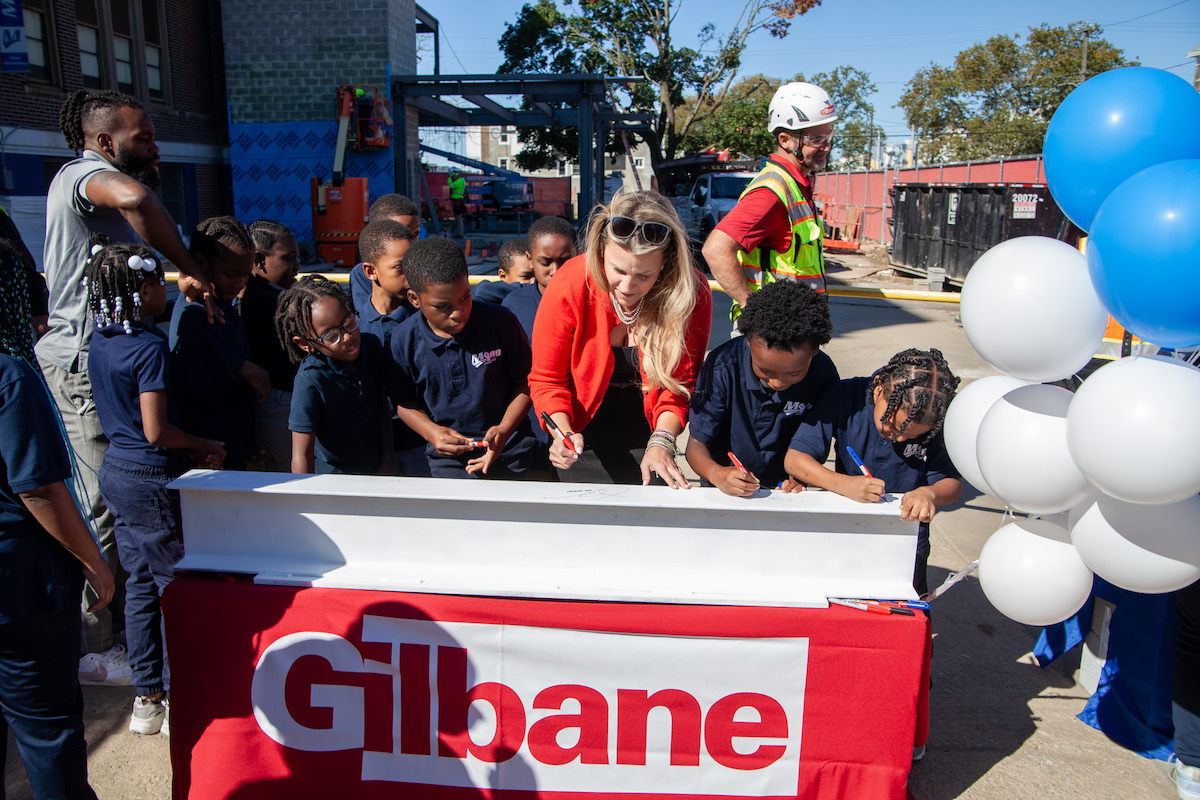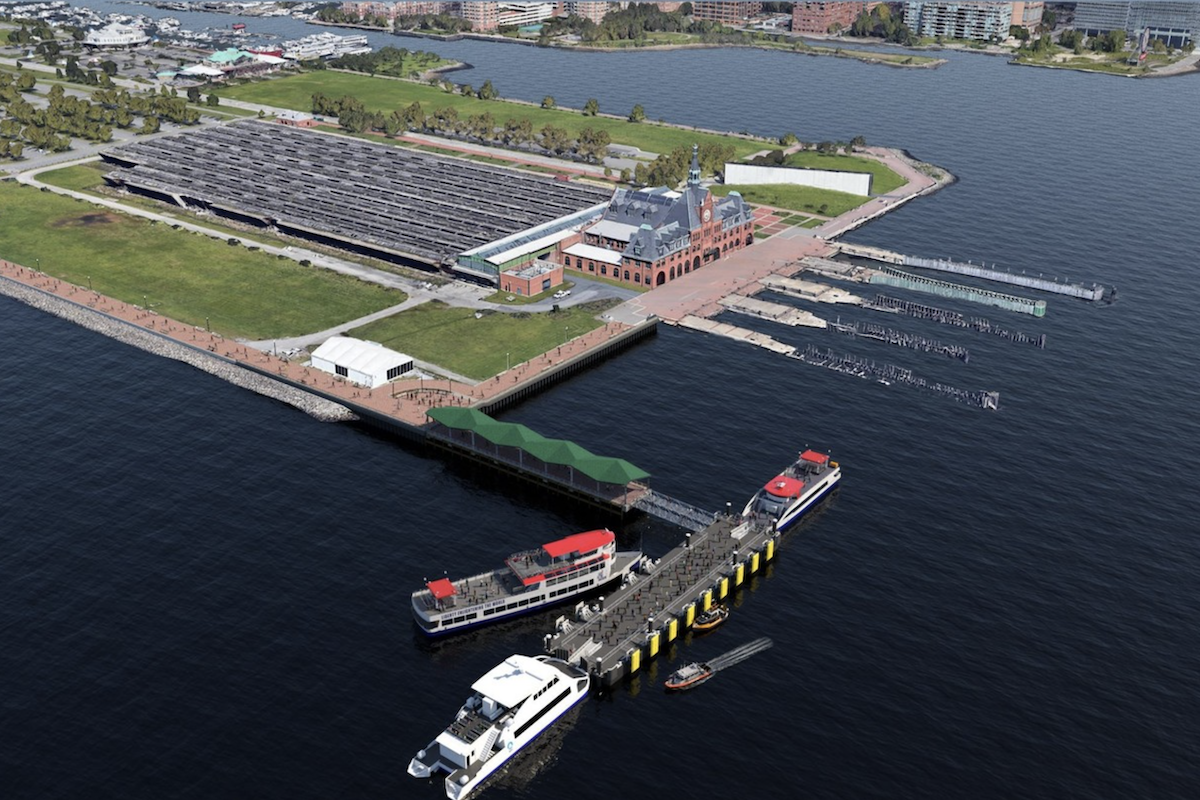“U.S. 550 is a corridor project to add capacity and correct some roadway geometry in a high-use corridor in an urban center, Bernalillo,” says Justin Gibson, District Engineer with NMDOT. “And it needed to be brought up to a current highway standards.”
The road not only serves the local community, but it also offers regional connectivity to the Farmington Area in northwest New Mexico. About 50,000 vehicles travel on this section of the corridor daily, with that number expected to increase to 70,000 by 2035.
At afternoon rush hour, more than 2,000 vehicles per hour drive on the two-lane roadway. The intersections previously provided a poor level of service. Also, U.S. 550 lacks bicycle facilities and has limited sidewalks. The project will correct those deficiencies.
U.S. 550’s configuration changes along the 2.4-mile corridor. To the east of the Rio Grande Bridge, the highway has three lanes in each direction, and west of the bridge, it has two lanes in each direction as part of a superstreet design concept aiming to improve safety and efficiency.

| Your local Trimble Construction Division dealer |
|---|
| SITECH Allegheny |
| SITECH Northeast |
NMDOT began working on the corridor in 2012, says Gibson. The department broke the corridor into three projects. The first from I-25 to NM 313, and the second from NM 313 to Santa Ana Road. This second project was completed in 2020.
The third project is under way now. It runs from NM 313 to NM 528 and will create three lanes in both directions. The department has acquired additional right of way for the project.
Parametrix Engineering, Planning, Environmental Sciences of Albuquerque, New Mexico, designed the project.
The state hopes the road’s greater capacity will promote economic development in communities in northwest New Mexico.
This will be the first continuous flow intersection in the state, and Gibson considers it a highlight of this project. It is part of a new superstreet concept for U.S. 550. Richard Kramer, a Huntsville, Alabama, traffic engineer described the idea for suburban intersections at a conference in 1987. Superstreets were first used in Maryland and North Carolina in the 1980s, per the FHWA.

| Your local Trimble Construction Division dealer |
|---|
| SITECH Allegheny |
| SITECH Northeast |
“A superstreet is a divided highway with intersections that do not allow minor street cross traffic to turn left,” Gibson says. “The minor street cross traffic must turn right and then vehicles make a U-turn to proceed to the desired location.”
Right turning traffic can continue without stopping. Those vehicles wanting to head left will be directed to the right and a signalized U-turn area with extra driving space.
“Continuous flow intersections can handle high volumes of traffic and turning movements,” Gibson says. “The movements can be combined in phases, which allows the traffic signal to be more efficient.”
The continuous flow intersection will decrease the number of conflict points, which are prone to severe crashes.
“It provides more access to the businesses,” Gibson says. “The intersections are closer spaced and have more drive in and out spaces.”

| Your local Trimble Construction Division dealer |
|---|
| SITECH Allegheny |
| SITECH Northeast |
Various studies support the use of continuous flow intersections. A 2010 study, reported in Transportation Research Record: Journal of the Transportation Research Board, found a displaced left-turn intersection could process more vehicles per hour per lane.
A study completed by the Florida Department of Transportation, reported in August 2020, found the continuous flow intersection was most effective when measured against other types of intersections at reducing nonmotorized (pedestrian and bicycle) crashes.
And a 2018 study by Joshua Wolfgram at the University of Massachusetts Amherst, in Transportation Engineering Masters Projects, concluded continuous flow intersections could improve safety and environmental impacts.
The volume of traffic presented challenges, Gibson says. The department has installed adaptive signals, monitored by traffic engineers to make real time changes based on information from the signals. The contractor has maintained two lanes of traffic in each direction on U.S. 550 and access to businesses and homes.
“We had lane reductions, and the contractor worked some nights,” Gibson says. “It took some patience and outreach to garner support and understanding about what we were trying to accomplish in the corridor.”

| Your local Trimble Construction Division dealer |
|---|
| SITECH Allegheny |
| SITECH Northeast |
Utilities also have presented challenges. “There were multiple unexpected utilities that we ran into and were mitigated through the course of the project,” Gibson says. “There were utilities that had to be relocated to accommodate the project, which added time to the project.”
No major environmental concerns were associated with this job.
The project is scheduled for completion this fall, but some temperature-sensitive surface treatments might have to take place in spring 2022 to avoid future maintenance problems associated with performing this work in winter conditions.
“I am really proud of the staff from the DOT who have managed the project and thankful to the contractor who has built the corridor,” Gibson says. “It’s been like life in the fishbowl. I appreciate the patience of the folks impacted as we complete this public works project.”







































































